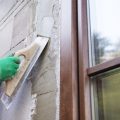1. How to Shut Off Your Water Supply
When a plumbing emergency strikes—like a burst pipe or overflowing toilet—knowing how to shut off your water supply can save you from thousands of dollars in damage. Every homeowner should know where their main water shut-off valve is located and how to use it properly.
Locate the Main Shut-Off Valve
The main water shut-off valve is typically found where the main water line enters your home. In colder climates, its often located inside the house—such as in the basement, crawl space, or utility room—to prevent freezing. In warmer areas, it might be outside near an exterior wall or in a ground box close to the street.
| Home Type | Likely Shut-Off Valve Location |
|---|---|
| Single-family home (cold climate) | Basement or utility room |
| Single-family home (warm climate) | Outside near exterior wall or in-ground box |
| Apartment/Condo | Laundry closet, under kitchen sink, or shared utility area |
How to Turn Off the Valve
Main shut-off valves are usually either a gate valve (wheel-shaped handle) or a ball valve (lever handle). Heres how to operate each:
| Valve Type | How to Turn Off |
|---|---|
| Gate Valve | Turn the wheel clockwise until it stops |
| Ball Valve | Turn the lever 90 degrees so its perpendicular to the pipe |
Troubleshooting Tips
- If the valve is stuck, don’t force it—use WD-40 or call a plumber.
- If you cant find the valve, check your property inspection report or ask your local water utility.
- If your home has multiple shut-offs (for example, at fixtures), learn those too for smaller emergencies.
Create a Household Emergency Plan
Add the main shut-off location to your family’s emergency contact list and show every household member how to turn it off. Labeling the valve with a tag or sticker helps during stressful moments when quick action is needed.
2. Dealing With Burst Pipes
A burst pipe can cause serious water damage in just minutes, so acting fast is key. Here are the essential steps every homeowner should know to reduce damage and stay safe while waiting for a professional plumber.
Step 1: Shut Off the Water Supply
The first thing you should do is turn off your homes main water valve. This stops more water from flowing through the broken pipe and prevents further flooding.
Where to Find Your Main Water Shut-Off Valve
| Location | Details |
|---|---|
| Basement or Crawl Space | Usually near the front foundation wall |
| Garage | Near the water heater or laundry area |
| Outside | In a covered box near the street or sidewalk |
Step 2: Cut the Power if Necessary
If water is leaking near electrical outlets or appliances, shut off power to that area of your home from the circuit breaker. This helps prevent electrical hazards.
Step 3: Drain Remaining Water
Open all faucets throughout the house to drain the remaining water from pipes. Start with cold taps, then flush toilets and run hot water until its empty. This relieves pressure and limits additional leakage.
Step 4: Locate the Burst Pipe
Look for signs like bulging ceilings, wet drywall, or puddles on the floor. If you can safely access the pipe, inspect it for cracks or splits.
Step 5: Apply a Temporary Fix
If you’ve found the damaged section and it’s accessible, apply a temporary patch until a plumber arrives. Here are some quick solutions:
| Temporary Fix | Description |
|---|---|
| Pipe Repair Clamp | A metal clamp that goes over the burst area to stop leaks temporarily. |
| Rubber and Duct Tape | Wrap thick rubber over the crack and secure it tightly with duct tape as a short-term fix. |
| Epoxy Putty | Moldable putty that hardens over small cracks; follow product instructions for best results. |
Step 6: Call a Licensed Plumber
No matter how well your temporary fix holds, a burst pipe needs professional repair. Contact a licensed plumber as soon as possible to prevent long-term damage and mold growth.

3. Handling a Clogged Drain or Toilet
Clogged drains and toilets are among the most common plumbing emergencies homeowners face. Knowing how to handle these situations quickly can prevent water damage and costly repairs. Here’s what you should know.
Use the Right Tools
Before calling a plumber, try these basic tools to clear the blockage:
| Tool | Best For | How to Use |
|---|---|---|
| Plunger | Toilets and sinks | Create a tight seal over the drain and push down firmly several times before pulling up sharply. |
| Drain Snake (or Auger) | Tough clogs deeper in pipes | Insert the snake into the drain, turn the handle to break up or hook the clog, then pull it out carefully. |
| Chemical Drain Cleaners | Minor hair or grease clogs | Use with caution and follow label instructions; avoid overuse as it may damage pipes. |
Tips for Toilets
- If the bowl is full, wait for some water to drain before plunging to avoid splashing.
- Use a flange plunger specifically designed for toilets—it creates a better seal than a cup-style plunger.
- If flushing doesnt work after plunging, avoid repeated flushes as they may cause overflow.
When to Call a Professional
If youve tried plunging and snaking with no success, or if you notice signs of a bigger issue like multiple drains backing up at once, it’s time to bring in a licensed plumber. Persistent clogs might indicate problems deep within your sewer line that require specialized equipment to fix.
Signs You Need Expert Help:
- Sewage smell from drains
- Water backing up in different areas of the house (like the shower when you flush)
- Frequent or recurring clogs despite efforts to clear them
Quick Tip:
Avoid pouring grease, coffee grounds, and hair down your drains. Regular maintenance can help prevent future blockages and keep everything flowing smoothly.
4. Recognizing Signs of Plumbing Leaks
Plumbing leaks can sneak up on you and cause major damage if not caught early. Knowing how to spot the warning signs can save you from costly repairs and water waste. Here are some of the most common indicators that you might have a hidden leak in your home.
Damp or Discolored Spots
If you notice damp patches, especially on walls, ceilings, or floors, it could mean theres a pipe leaking behind the surface. These spots may appear darker than surrounding areas or feel soft to the touch.
Mold or Mildew Growth
Mold thrives in moist environments. If youre smelling musty odors or seeing mold growth in unusual places like baseboards or under sinks, its a strong sign of excess moisture due to a hidden leak.
Unusually High Water Bills
A sudden spike in your water bill without increased usage often points to a leak somewhere in your plumbing system. Compare your recent bills to previous months to spot any unexplained increases.
Low Water Pressure
If your faucets suddenly have less pressure than usual, a leak might be diverting water away from its intended path. This could indicate a serious issue with your pipes.
Common Signs and What They Might Mean
| Sign | Possible Cause |
|---|---|
| Damp walls or ceilings | Leaking pipe behind drywall |
| Mold or mildew smell | Moisture buildup from slow leaks |
| High water bill | Hidden leak wasting water continuously |
| Poor water pressure | Burst pipe or underground leak |
What to Do If You Suspect a Leak
- Turn off the main water supply: This helps prevent further damage while you investigate the issue.
- Check your water meter: Note the reading, avoid using water for a couple of hours, then check again. If it changes, there’s likely a leak.
- Call a licensed plumber: A professional can use tools like thermal imaging or moisture meters to locate hidden leaks without tearing open walls.
The sooner you catch and address leaks, the better youll protect your home from structural damage and mold-related health issues.
5. When to Call a Licensed Plumber
While some plumbing issues can be handled with DIY fixes, there are certain emergencies that need the immediate attention of a licensed professional. Knowing when to pick up the phone and call a plumber can save you from costly repairs and even protect your family’s safety.
Situations That Require Immediate Professional Help
Some plumbing problems go beyond simple leaks or clogs. Here are common emergency scenarios where calling a licensed plumber right away is the best move:
| Emergency Situation | Why You Need a Pro |
|---|---|
| Gas Leaks | Extremely dangerous. If you smell gas, leave your home immediately and call a plumber trained in gas line repair. |
| Burst Pipes | A burst pipe can flood your home quickly. A plumber will know how to stop the flow and repair the damage. |
| Sewer Line Backups | Sewage coming back into your home is a health hazard. Professionals have the tools to handle this safely. |
| No Water Access | If no water is coming out of your faucets, it could mean a serious issue in your main line that needs expert inspection. |
| Major Leaks Behind Walls or Ceilings | You may notice stains or dripping — these hidden leaks can cause structural damage if not addressed quickly. |
The Risks of Waiting Too Long
Ignoring serious plumbing problems can lead to water damage, mold growth, higher repair costs, and even safety risks like electrical hazards or contaminated drinking water. Acting fast makes all the difference.
Your Quick Checklist for Calling a Plumber:
- You smell natural gas in or around your home
- Your pipes have frozen or burst
- You see sewage backing up into sinks, tubs, or toilets
- You experience sudden drops in water pressure or no water at all
- You notice constant wet spots on walls, ceilings, or floors
A Helpful Tip:
If youre ever unsure whether something qualifies as an emergency, its better to be safe than sorry. A quick call to a licensed plumber can give you peace of mind and potentially prevent thousands of dollars in damage.


